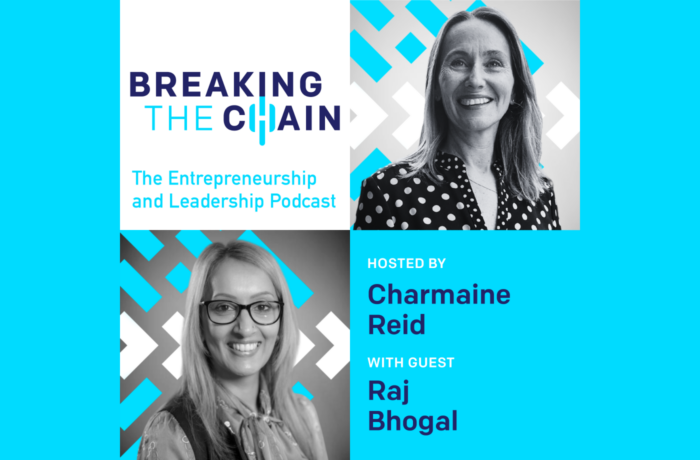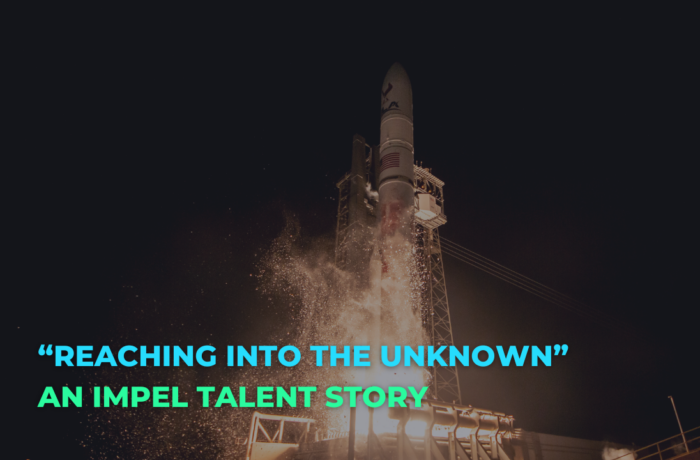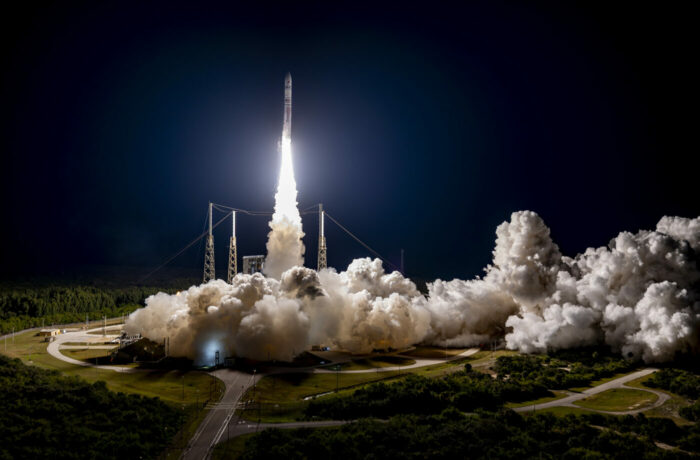In the dynamic and ever-evolving space and aerospace industry, embracing diversity has emerged as an indispensable factor for progress and innovation. Recognising the profound significance of inclusivity, employers are increasingly focused on building diverse workforces that reflect a tapestry of backgrounds, experiences, and perspectives. Such commitment to diversity, equity, and inclusion (DEI) not only fosters a more equitable workplace culture but also unlocks a multitude of advantages, collectively propelling the industry to greater heights. However, employers face a unique set of challenges in their pursuit of a diverse workforce, from overcoming systemic biases to attracting and retaining diverse talent. Nonetheless, these challenges also present golden opportunities to drive meaningful change and amplify the industry’s overall potential.
In this article, we’ll delve into the business case for diversity in the space and aerospace sector, explore the challenges employers encounter in building a diverse workforce, highlight key opportunities for driving DEI initiatives, discuss best practices to achieve inclusivity and showcase inspiring case studies and success stories of organisations that have reaped the benefits of a diverse and thriving workforce.
The Business Case for Diversity in Space and Aerospace
Diversity in the space and aerospace industry is compelling, as it brings forth a plethora of advantages that directly impact an organisation’s bottom line and overall success. Embracing diversity in this fast-paced and technology-driven sector enhances innovation by fostering a melting pot of ideas, perspectives, and approaches.
Diverse teams are better equipped to tackle complex challenges and improve problem-solving, drawing from a wealth of unique insights and experiences. This, in turn, drives efficiency and enables the industry to push the boundaries of exploration and technological advancements. Equally, a diverse workforce enhances an organisation’s ability to understand and cater to the needs of a global customer base, broadening its market reach and improving customer satisfaction. Studies have shown that diverse teams outperform homogeneous ones, leading to increased competitiveness in the market and, ultimately, greater profitability. Beyond financial gains, customers, investors, and stakeholders are increasingly expecting organisations to be committed to diversity and inclusion, not only as a moral imperative but also as a strategic business driver.
Companies that actively promote diversity and create inclusive cultures are seen as more forward-thinking and are better positioned to attract and retain top talent, win the trust of customers, and garner support from investors and partners. As the industry evolves, the importance of diversity and inclusion will continue to grow, making it a crucial pillar of success for space and aerospace companies striving for innovation and excellence in the 21st-century market landscape.
One compelling case study that exemplifies the positive impact of diversity in the space and aerospace industry is NASA’s Mars Rover Curiosity mission. This ambitious project aimed to explore the surface of Mars and search for signs of past life, pushing the boundaries of space exploration. During the planning and execution of this mission, NASA emphasised the importance of diversity and inclusivity in its team composition.
The Jet Propulsion Laboratory (JPL), which led the mission, actively promoted diversity and actively sought individuals from diverse backgrounds to be part of the team. The diverse workforce at JPL brought together scientists, engineers, and experts from various cultural, academic, and professional backgrounds, creating a rich tapestry of perspectives and expertise.
The positive impact of this diversity was evident throughout the mission’s lifecycle. During the planning phase, the diverse team approached challenges from multiple angles, enabling innovative problem-solving and creative solutions. This diversity of thought helped the team devise new strategies for navigating the harsh Martian terrain and develop cutting-edge technologies to ensure the rover’s safe landing and longevity.
Moreover, diversity in the team led to a better understanding of the global significance of the mission. Scientists and engineers from different backgrounds brought unique perspectives, allowing the team to design experiments that addressed scientific questions important to various communities worldwide.
The Mars Rover Curiosity mission, launched in 2011, has been an astounding success. The rover has made groundbreaking discoveries, including evidence of ancient Martian lakes and the presence of organic compounds. These findings have provided valuable insights into the planet’s history and potential habitability, paving the way for future missions and scientific research.
The success of the Curiosity mission stands as a testament to the positive impact of diversity in the space and aerospace industry. It highlights how fostering an inclusive work environment and bringing together individuals with diverse experiences and ideas can lead to unparalleled innovation, improved problem-solving, and groundbreaking achievements in the quest for scientific knowledge and exploration of the cosmos.
Challenges in Building a Diverse Workforce
Building a diverse workforce in the space and aerospace industry comes with its own set of unique challenges. One major obstacle is the prevalence of unconscious bias, where individuals hold implicit stereotypes that can influence their decision-making in hiring, promotion, and team composition. Additionally, the lack of representation of certain groups, particularly women and minorities, in key technical and leadership roles presents a significant barrier to achieving diversity and inclusion goals. Gender imbalances persist, with women being underrepresented in science, technology, engineering, and mathematics (STEM) fields, which are crucial for the industry. Systemic issues, such as historical inequalities and societal norms, can perpetuate disparities in opportunities and hinder the progress of underrepresented groups.
Furthermore, educational gaps and limited access to resources in certain communities may result in a smaller pool of diverse talent to recruit from. Industry culture can also play a role, as workplaces that do not actively promote inclusivity may struggle to attract and retain diverse talent. Addressing these challenges requires a multifaceted approach that includes fostering awareness of unconscious biases, implementing targeted recruitment and mentorship programs, promoting STEM education among underrepresented groups, and cultivating an inclusive and supportive company culture that empowers all employees to thrive regardless of their background. Only by actively dismantling these barriers can the space and aerospace industry truly harness the transformative power of diversity and drive innovation and progress to new heights.
Opportunities for Employers to Drive Diversity, Equity and Inclusion
In today’s changing business landscape, employers have unprecedented opportunities to drive Diversity, Equity, and Inclusion (DEI) within their organisations.
There are key areas that can enhance diversity in the industry:
- The implementation of inclusive recruitment practices that actively seek out diverse talent – By widening the talent pool and adopting blind recruitment techniques, employers can mitigate unconscious biases and ensure a fair selection process. Additionally, organisations can actively partner with diverse communities and educational institutions to attract candidates from underrepresented backgrounds, fostering a more inclusive workforce.
- Creating an inclusive workplace culture is equally crucial in promoting DEI – Employers must prioritise diversity training and sensitivity programs, encouraging open dialogues that celebrate differences and address challenges head-on. Leaders can also set an example by embracing diversity themselves, which fosters a sense of belonging among employees and enhances productivity. Employers should actively promote diversity in decision-making processes, ensuring all voices are heard and valued.
- Offering career development opportunities for underrepresented groups – Establishing mentorship programs, providing training workshops, and implementing advancement initiatives can help bridge the opportunity gap and cultivate a diverse talent pipeline. By investing in the growth and success of underrepresented employees, employers not only enhance diversity but also tap into a wealth of untapped potential that contributes to innovation and organisational success.
Embracing DEI in the workplace is not just a moral imperative but also a strategic advantage for employers. By focusing on inclusive recruitment practices, cultivating an inclusive workplace culture, and offering career development opportunities for underrepresented groups, employers can tap into diverse perspectives, foster creativity, and drive long-term success in today’s competitive business environment.
Best Practices for Building a Diverse Workforce
Building a diverse workforce requires a thoughtful and proactive approach, encompassing various best practices to overcome challenges and capitalise on opportunities. To diversify talent pipelines, employers should engage in targeted outreach efforts by:
- Actively seeking candidates from underrepresented groups through job boards, networking events, conferences, or through a specialist staffing partner dedicated to diversity and inclusion. Establishing partnerships with educational institutions and professional organisations focused on supporting diverse talent can also foster a diverse talent pipeline. Mentorship programs play a crucial role in nurturing talent from diverse backgrounds, providing guidance, and offering career development opportunities.
- Promoting an inclusive workplace culture is equally vital. Employers should prioritise diversity training to raise awareness of unconscious biases and promote cultural competency among employees and leaders. Employee resource groups (ERGs) can be instrumental in fostering a sense of belonging and empowerment, as they provide a platform for employees to connect, share experiences, and advocate for diversity and inclusion within the organisation. Establishing clear diversity metrics and holding leadership accountable for progress can help ensure diversity remains a priority and drives real change.
- Cultivate an inclusive environment where all employees feel respected and valued. Encouraging open dialogue and active listening allows for the celebration of differences and creates a safe space for employees to share their unique perspectives. Additionally, employers should review their policies and practices to eliminate potential biases and create equal opportunities for career advancement.
By adopting these best practices, employers can build a diverse and inclusive workforce that not only attracts top talent from diverse backgrounds but also harnesses the power of diverse perspectives to drive innovation and business success. Embracing diversity and inclusion as core values not only fosters a positive work environment but also sets the foundation for a more resilient and competitive organisation in today’s global and interconnected world.
Case Studies and Success Stories
An inspiring example of an organisation in the aerospace industry that successfully built a diverse workforce is Lockheed Martin. Through their commitment to DEI, Lockheed Martin has implemented various strategies to attract and retain diverse talent. They established partnerships with diverse communities, educational institutions, and professional organisations, actively promoting careers in STEM fields to underrepresented groups. By engaging in targeted recruitment efforts, they expanded their talent pool and mitigated unconscious biases in the hiring process. Additionally, they developed inclusive leadership programs and employee resource groups to foster a sense of belonging and empowerment within the workforce.
Overcoming challenges in creating a diverse workforce, Lockheed Martin invested in diversity training for their employees and leadership, raising awareness of unconscious biases and promoting cultural competency. They also established clear accountability measures to track progress and set diversity goals at all levels of the organisation. By embracing diversity as a core value, they were able to create an environment where employees from different backgrounds feel valued, supported, and motivated to contribute their best ideas and talents.
The positive impact on Lockheed Martin’s business outcomes has been substantial. With a diverse workforce, they have gained a competitive advantage by bringing a wide range of perspectives to problem-solving and innovation. Studies have shown that diverse teams are more innovative and better equipped to understand and meet the needs of diverse markets. Lockheed Martin’s inclusive workplace culture has also led to increased employee satisfaction and retention, resulting in a stronger and more engaged workforce. Furthermore, their commitment to diversity has bolstered their reputation as an employer of choice and a responsible corporate citizen, attracting more customers and investors who prioritise DEI initiatives. Overall, Lockheed Martin’s success story demonstrates the tangible benefits of building a diverse and inclusive workforce in the aerospace industry.
Conclusion
Without question, diversity is a paramount driver of success in the space and aerospace industry. The key points discussed underscore the vital importance of building a diverse workforce, which not only fosters innovation but also enhances organisational resilience and competitiveness. Despite the challenges, employers have numerous opportunities to drive DEI, including targeted outreach, educational partnerships, and mentorship programs to diversify talent pipelines. Creating an inclusive workplace culture through diversity training, employee resource groups, and clear diversity metrics is equally crucial. By embracing diversity as a core value and implementing best practices, we can collectively forge a more equitable and inclusive industry, where every individual’s unique contribution is valued and celebrated, driving our organisations and the industry as a whole toward even greater heights of success and prosperity.
Want to learn more about Impel Talent’s expertise in supporting organisations in the Space and Aerospace industry with their DEI initiatives? Contact our Head of Space & Technology, Eugene McIntyre.
Photo by NASA








